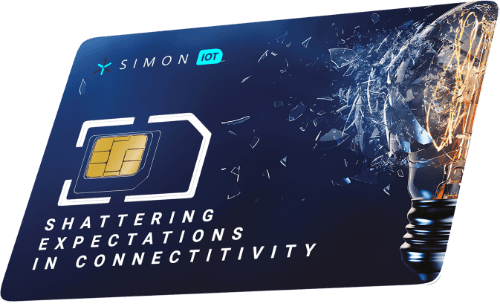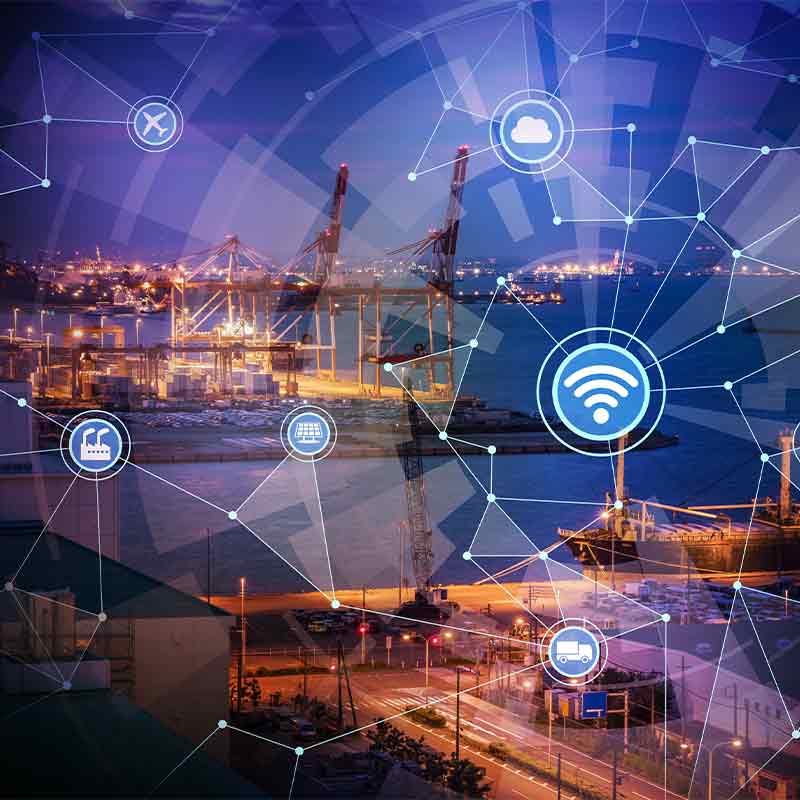Iot Sim Card Guide IoT SIM
Iot Sim Card Guide IoT SIM
Blog Article
Iot Board With Sim Card IoT SIM Card
In the quickly evolving landscape of the Internet of Things, connectivity is essential for the seamless functioning of units and techniques. Two principal technologies have emerged as key opponents: Wi-Fi and Low Power Wide Area Networks (LPWAN). Each has its own strengths and weaknesses, making them appropriate for different functions.
Wi-Fi is known for its high-speed knowledge transfer and widespread availability, making it a preferred choice for so much of smart devices. Its excessive bandwidth allows for the transmission of large quantities of data rapidly, ideal for functions that require high knowledge throughput. This may be notably beneficial in environments like smart houses, the place a number of units may be streaming video or exchanging massive data recordsdata concurrently.
Prepaid Iot Sim Card IoT SIM Cards Explained Connectivity
However, the reliance on extra power-consuming hardware can be a downside. Wi-Fi units usually require a constant energy supply, which limits their use in applications the place gadgets need to function for extended durations with out frequent recharging or battery replacement. Smart sensors and units utilized in agricultural fields or rural environments usually encounter such limitations - How Iot Sim Card Works.
LPWAN, however, provides a particular benefit in energy consumption. Designed for low-power operations, LPWAN technologies permit gadgets to transmit information over lengthy distances on little or no energy. This attribute makes LPWAN a gorgeous possibility for IoT use instances involving sensors that have to operate in remote places for extended durations.
The range of LPWAN is another compelling function, as it could cover a number of kilometers, even in rural settings. In contrast, Wi-Fi tends to have a restricted vary, sometimes encompassing a number of hundred meters. This is particularly relevant in applications involving smart agriculture, where sensors monitoring soil conditions or crop health could also be distributed over huge expanses of land.
While Wi-Fi is much less complicated to deploy, particularly in urban areas, the infrastructure required for LPWAN might involve more complexity. Companies might have to ascertain base stations or partner with network providers to make sure protection. This might deter some businesses from pursuing LPWAN, despite its advantages in vary and energy effectivity.
Iot Sim Card Pricing IoT Data SIM Card

Security is another necessary issue to consider. Wi-Fi networks typically employ robust security protocols, but they can additionally be more vulnerable to cyber threats when compared with LPWAN protocols, which tend to be less common and therefore less targeted. This can current a double-edged sword; while LPWAN may be much less susceptible to assaults due to its decrease visibility, its safety mechanisms won't be as refined.
Data latency is also a noteworthy consideration. Wi-Fi generally offers decrease latency compared to LPWAN, making it extra appropriate for real-time functions where instant information retrieval is crucial, such as video streaming or online gaming. For IoT functions that may tolerate longer knowledge transmission occasions, similar to environmental monitoring or utility meter readings, LPWAN could be satisfactory.
Scalability is an important side of commercial IoT. Wi-Fi networks can become congested as extra units are added, leading to decreased efficiency. LPWAN, on the opposite hand, is specifically designed to accommodate a giant number of gadgets over huge areas without substantial efficiency degradation. This makes it an appropriate choice for smart city applications, the place thousands of sensors and gadgets should operate concurrently.
What Is An Iot Sim Card SIM Providers LTE-M/Nb-IoT Roaming Setup
The price factor can also play a big role in figuring out the best choice for IoT connectivity. Wi-Fi installations can usually be cost-effective in smaller setups, but expenses can rise considerably with larger deployments due to the want for extra access factors and infrastructure. Conversely, LPWAN's low operating prices and lengthy battery life may translate to important savings in intensive deployments.
Operational requirements vary for each technologies. Wi-Fi requires a more steady and reliable energy source, making it less appropriate for mobile IoT functions. LPWAN, with its energy-efficient design, can help other gadgets in movement, such as asset trackers in logistics or fleet administration - Iot Sim Card Uk. This feature extends its applicability to eventualities the place devices have to transmit knowledge whereas on the move.
Hologram Global Iot Sim Card Prepaid 4G SIM Card Data

When addressing the precise use cases for IoT, it becomes clear that every technology has its own best purposes. Wi-Fi is especially effective in environments where high-throughput and instant response are essential. Settings such as smart homes, business buildings, and concrete centers frequently require the high-speed capabilities that Wi-Fi offers.
LPWAN excels in eventualities involving distant monitoring and low-frequency information transmission. Use circumstances like agricultural monitoring, wildlife monitoring, and smart metering are significantly suited to the strengths of LPWAN know-how. Its capacity to extend battery life in low-power devices makes it an excellent candidate for these functions, the place fixed energy sources are not available.
Ultimately, the selection between Wi-Fi and LPWAN for IoT connectivity will rely upon particular project necessities. Evaluating elements similar to energy consumption, vary, knowledge transmission needs, security, and scalability will be important in making an knowledgeable choice.
As IoT continues to mature, hybrid solutions might emerge that seek to mix the strengths of each technologies. For instance, a wise city may deploy LPWAN for low-power sensors monitoring environmental situations, whereas using Wi-Fi for high-bandwidth applications like surveillance cameras. Such integrations may result in extra resilient and adaptable networks that cater to numerous requirements.
Iot Sim Card Providers IoT SIMs Any Device Anywhere
The development of IoT functions necessitates ongoing evaluation of connectivity options. With advances in both Wi-Fi and LPWAN technologies likely on the horizon, staying knowledgeable about their capabilities and limitations is vital to maximizing their potential in real-world purposes. As industries continue to innovate, the dialogue between these two technologies will probably form the longer term connectivity landscape.
In conclusion, whereas Wi-Fi and LPWAN each hold distinctive benefits for IoT connectivity, the decision must be knowledgeable by practical concerns and particular software wants. The capacity to adapt and choose the proper know-how could considerably enhance the efficacy and efficiency of IoT options in myriad sectors.

- Wi-Fi offers larger knowledge transfer speeds, making it suitable for functions requiring real-time knowledge streaming, like video surveillance.
- LPWAN technology makes a speciality of long-range communication, enabling units to attach over kilometers whereas consuming minimal power.
- Wi-Fi networks can expertise congestion, especially in densely populated areas, doubtlessly resulting in interruptions in connectivity.
- LPWAN is designed specifically for low-power units, allowing them to function for years on a single battery, ideal for distant sensor purposes.
- Wi-Fi usually requires more frequent maintenance and safety updates, while LPWAN networks usually have lower administration overhead once established.
- Scalability is a major advantage of LPWAN, as it could possibly simply accommodate thousands of gadgets in a single network with out significant degradation in efficiency.
- Devices on Wi-Fi usually require a steady power supply, which limits their deployment in remote or hard-to-reach areas, while LPWAN options can operate effectively in such environments.
- Wi-Fi helps higher frequency bands, which might lead to higher interference but provides it higher performance in short-range functions.
- The cost of deploying LPWAN may be lower when it comes to infrastructure, especially for large-scale IoT networks, as fewer base stations are needed for protection.
- Wi-Fi standards are constantly evolving, offering new options, but this will generally lead to compatibility issues with legacy units, unlike the more secure LPWAN protocols.undefinedWhat is the main difference between Wi-Fi and LPWAN for IoT connectivity?undefinedWi-Fi is a high-bandwidth, short-range connectivity option ideal for giant quantities of data, while LPWAN (Low Power Wide Area Network) is designed for low-bandwidth, long-range communication, making it suitable for remote IoT units needing minimal information transmission.
Iot Sim Card IoT SIM Card
Which know-how is healthier for battery life in IoT gadgets, Wi-Fi or LPWAN?undefinedLPWAN usually consumes a lot less power, enabling battery-operated devices to operate for years, whereas Wi-Fi gadgets tend to drain batteries faster as a result of their larger power requirements.
Can I use Wi-Fi for large-scale IoT deployments?undefinedWi-Fi can be utilized for large-scale deployments, however it may face challenges like congestion and vary limitations. LPWAN, however, is designed telkomsel iot sim card for large-scale protection and better scalability in IoT applications.
Iot Sim Card Single-Core Global eUICC IoT SIM
What types of use cases are greatest suited for LPWAN?undefinedLPWAN works well for purposes that require extensive coverage and low information rates, corresponding to smart agriculture, asset monitoring, and environmental monitoring, where devices may be deployed in distant locations.
Is Wi-Fi sufficient for city IoT applications?undefinedWhile Wi-Fi can serve city IoT wants, issues like interference and restricted range may arise. LPWAN presents a extra dependable resolution for urban functions needing intensive protection typically past a single Wi-Fi network vary.
How does knowledge transfer velocity examine between Wi-Fi and LPWAN?undefinedWi-Fi typically provides high-speed knowledge switch charges suitable for functions needing quick information change. LPWAN offers lower speeds however compensates with higher protection and higher battery life for low-data-use instances.
Are there security considerations associated with Wi-Fi and LPWAN?undefinedBoth technologies have safety considerations, but Wi-Fi is often deemed extra susceptible to unauthorized entry. LPWAN incorporates numerous encryption standards, providing safety features tailored for IoT deployments.
Global Iot Sim Card IoT Data SIM Card Plans Features
Can LPWAN help real-time communication needs?undefinedLPWAN just isn't designed for real-time functions as a end result of its decrease information transfer rates and latency. Wi-Fi is extra suitable for applications requiring quick knowledge exchange, such as video streaming or reside monitoring.
What impression do environmental components have on Wi-Fi and LPWAN?undefinedEnvironmental elements such as partitions and interference can considerably affect Wi-Fi performance, limiting its vary. LPWAN is designed to carry out properly over longer distances and thru numerous obstacles, making it more resilient in various environments.
Report this page